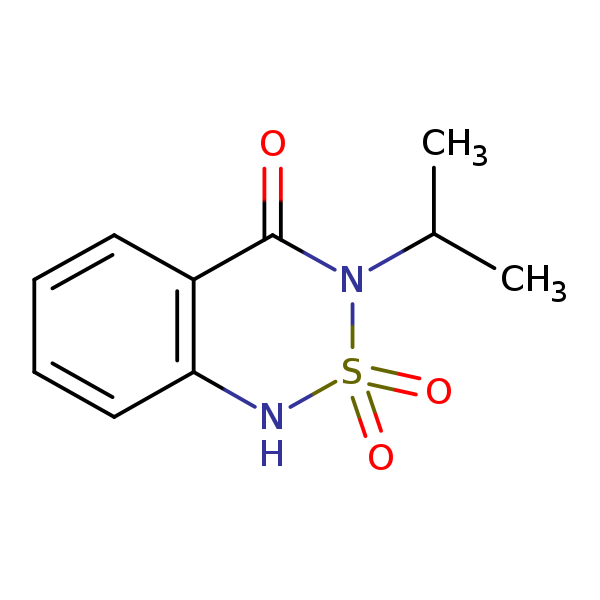Bentazon (Basagran)
CASRN 25057-89-0 | DTXSID0023901
- Toxicological Review (PDF) (30 pp, 180 K)
- IRIS Summary (PDF) (20 pp, 145 K)
- Status: EPA announced in a 2004 Federal Register Notice that chemicals used as pesticides would not be re-assessed by the IRIS Program. This entry in the IRIS database is preserved at the request of EPA program and regional offices. Additional toxicological information may be found under "Other EPA Information."
On this page:
Noncancer Assessment
Reference Dose for Oral Exposure (RfD) (PDF) (20 pp, 145 K) Last Updated: 03/02/1998
| System | RfD (mg/kg-day) | Basis | PoD | Composite UF | Confidence |
|---|---|---|---|---|---|
| Hematologic | 3 x 10 -2 | Blood loss into the gastrointestinal tract; coagulation defect in male and female dogs |
NOAEL
(ADJ):
3.2
mg/kg-day |
100 | Medium |
Reference Concentration for Inhalation Exposure (RfC) (PDF) (20 pp, 145 K) Last Updated: 03/02/1998
Not assessed under the IRIS Program.
Cancer Assessment
Weight of Evidence for Cancer (PDF)
(20 pp, 145 K)
Last Updated: 03/02/1998
| WOE Characterization | Framework for WOE Characterization |
|---|---|
| E (Evidence of non-carcinogenicity for humans) | Guidelines for Carcinogen Risk Assessment (U.S. EPA, 1986) |
| Not likely to be carcinogenic to humans | Proposed Guidelines for Carcinogen Risk Assessment (U.S. EPA, 1996) |
- Under EPA's 1986 Guidelines for Carcinogen Risk Assessment, Bentazon would be classified as evidence of non-carcinogenicity for humans, or a Group E chemical. Under EPA's proposed guidelines for carcinogen risk assessment (U.S. EPA, 1996), Bentazon would be characterized as not likely to be carcinogenic to humans by any route of exposure.
- This may be a synopsis of the full weight-of-evidence narrative.
Quantitative Estimate of Carcinogenic Risk from Oral Exposure (PDF) (20 pp, 145 K)
Not assessed under the IRIS Program.
Quantitative Estimate of Carcinogenic Risk from Inhalation Exposure (PDF) (20 pp, 145 K)
Not assessed under the IRIS Program.
Other EPA Information
- Human Health Benchmarks for Pesticides (HHBP). This database provides human health benchmarks for pesticides that may be present in drinking water.
- Office of Pesticide Programs Pesticide Chemical Search. This database provides links to health effects information and registration status for pesticides.
- Chemistry Dashboard. This database provides information on chemical structures, experimental and predicted physicochemical, and toxicity data.
Critical Effects
Chemical Structure

Synonyms
- BAS 351-H
- Basagran
- Bendioxide
- Bentazon
- Bentazon (Basagran)
- Bentazone
- 1 h-2,1,3-Benzothiadiazin-4 (3h)-one-2,2-dioxide, 3-isopropyl-
- 25057-89-0
- 3-(1-Methylethyl)-1h-2,1,3-benzothiazain-4(3h)-one,2,2-dioxide
- 3-Isopropyl-1 h-2, 1-3-benzothiadiazin-4(3h)-one-2,2-dioxide
- 3-Isopropyl-2,1,3-benzothiadiazinon-(4)-2,2-dioxid

